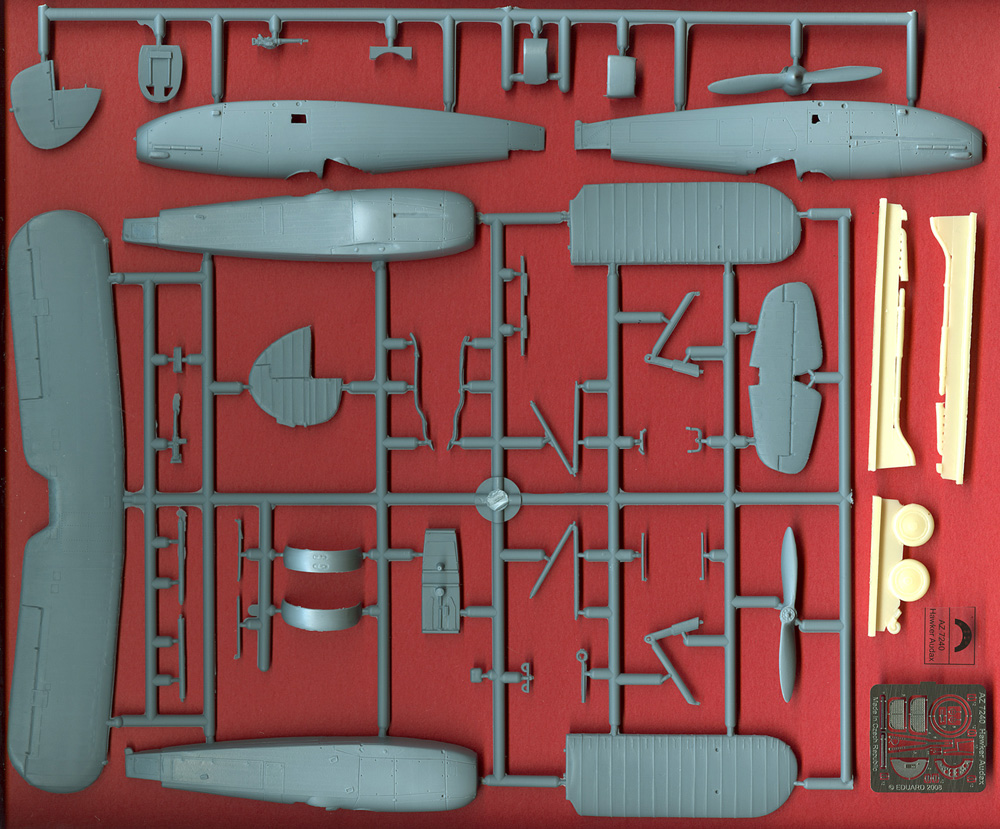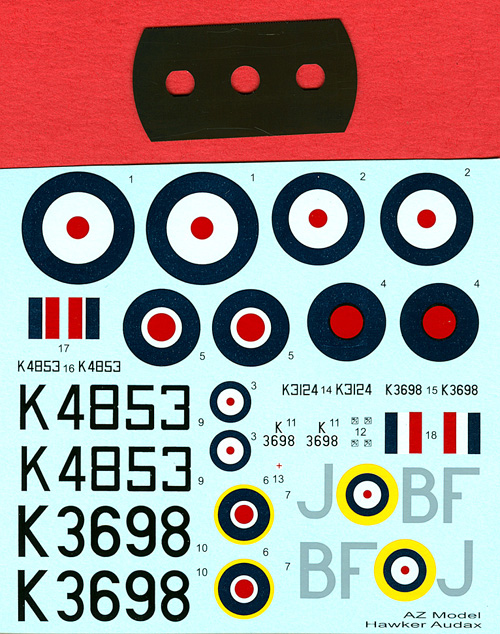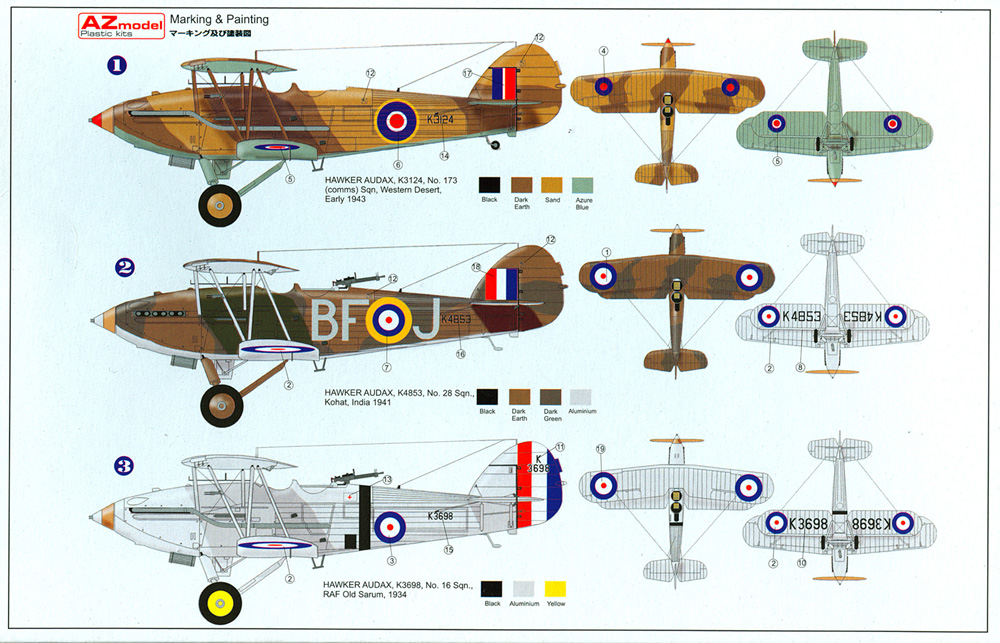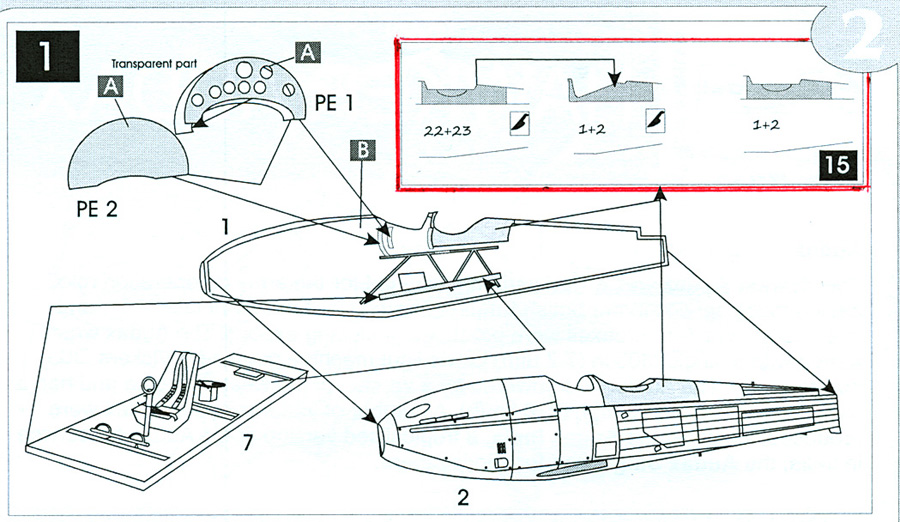History
It all started with the Hart designed in 1927 to Air Ministry Specification 12/26 for a “Day Bomber” to replace the aging D.H. 9A, “Ninaks”. The Hart prototype, J9052, first flew in June 1928. This plane gave the RAF, then engaged in “Policing the Empire”, a tremendous advantage over their camel and horse mounted adversaries in colonies around the world. Inspired by the successes of the Hart in service, the Air Ministry issued Specification 7/31 in April 1931 for the Audax. The Audax was a Hart modified for Army Cooperation duties. The modifications included, inter alia, a message pick-up hook, universal stores carriers and a standard Royal Army field radio. The prototype Audax, which was, in fact, the modified Hart prototype, first flew on December 29, 1931. The first forty production airplanes were delivered throughout the following two months. A total of 784 Audaxes were ultimately delivered to the RAF and to several foreign buyers through 1938.
The Kit

|

|

|

|
First, one of my chronic complaints: the end-opening box is too flimsy for its mission. Mine arrived pre-crushed; fortunately without damage to its contents. A peculiar, and welcome, bonus is the inclusion in the kit of a double-edged razor saw of .006” (.15 mm) thickness from JLC that is much more rigid, and thus useable, than my .005” (.127 mm) photo-etched blades from Air Waves.
The kit itself comprises 48 parts injection molded in a mid gray colored polystyrene, four parts cast in a pale cream colored resin, one small fret containing 19 parts photo-etched in stainless steel, an instrument panel printed on a sheet of clear plastic, a very well printed decal sheet and a four page folder of instructions. The colors and markings information for three airplanes is presented in full color on the back of the box.
I became very concerned upon my initial examination of the kit, as it appeared AZ had packed the wrong fuselages, there are two of them, in the kit. Close examination of the wordless instructions shows that you must kit-bash the two included fuselages to obtain the fuselage configuration required for the Audax. You must remove the rear cockpit, with the level gun ring mount, from one fuselage and install it on the other having first removed its rear cockpit, with the angled gun ring mount. Now that I've come to think of it that's obviously why AZ included the razor saw in the kit! I've included a scan of the subtle, and easily missed, graphic instruction to make sure you don't miss it. Otherwise the kit is entirely conventional. The builder must provide some .6 mm (.024”) plastic rod for the fuselage mounted gun barrel and tail struts and must also scratchbuild rudder, elevator and aileron control horns. These are customarily provided as PE parts. The only option in the kit is between long and short exhaust pipes; no external stores are provided.
Conclusion
This is a very good kit of a subject that should be quite popular in the UK. It will build, out-of-the-box, into a fine representation of this historically important type. This kit is far superior, in all respects, to the venerable Airfix Hart, later Demon, kit albeit a good bit more pricey. Clearly, given the parts breakdown in this kit, we will see more members of the wide ranging Hart family of Hind, Hartbees, Hardy, Demon, Osprey I-V and Hector, many with radial engines, from AZ.
Our thanks to AZ Model for providing the kit for review.
Hannants list it at 15.46 pounds (~$23.00).
References
· Profile 140, The Hawker Audax & Hardy: Francis K. Mason.
· The Hart Family; Hawker Hart & Derivatives: Ray Rimell, Linewright, UK, 1989, ISBN 0-946958-34-3.
· Scale Aircraft Modelling, Vol. 15, No. 5, February 1993: article; The Hawker Hart Family, Sue Bushell.
· Aeroplane Monthly, September 1995: article, Hawker Audax and Hardy, Owen Thetford.